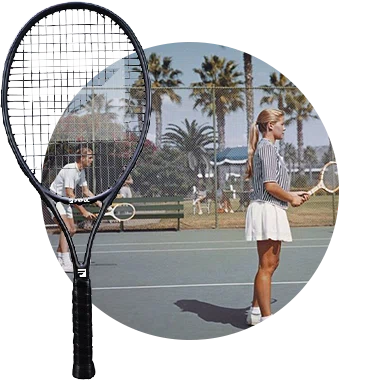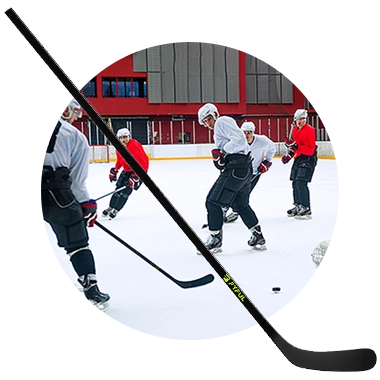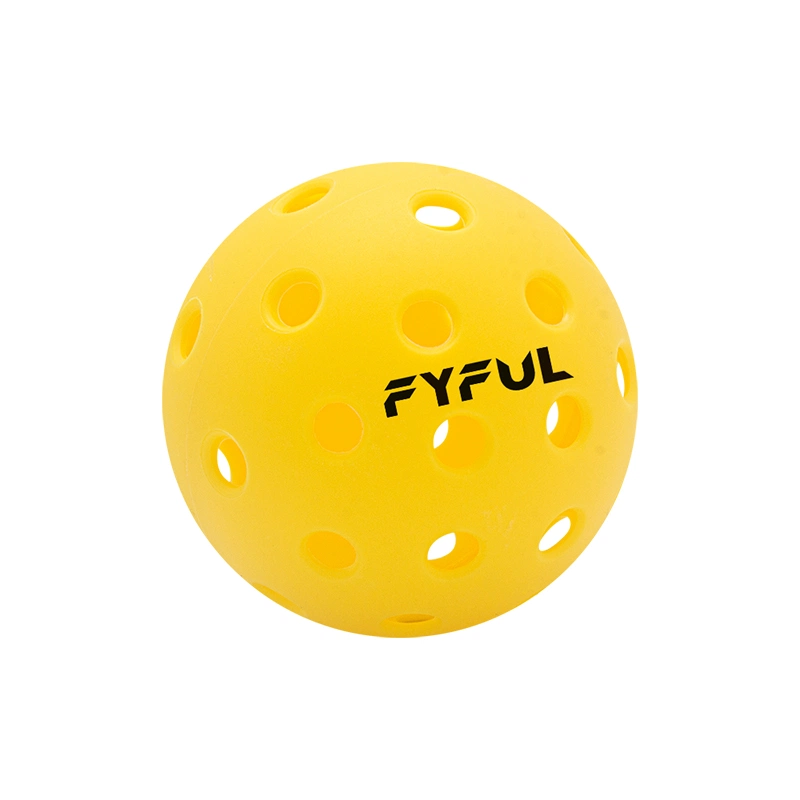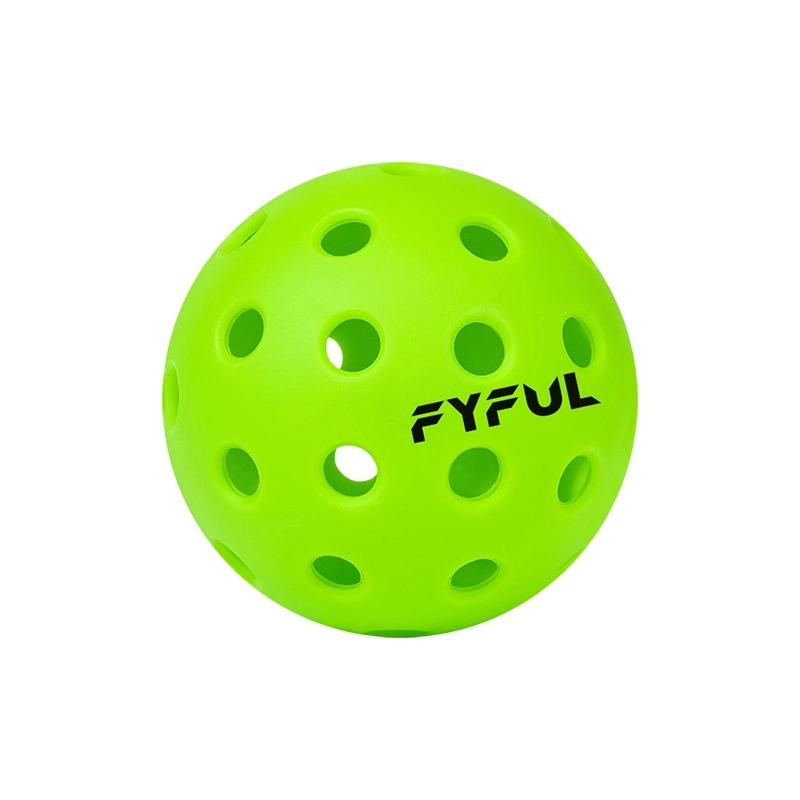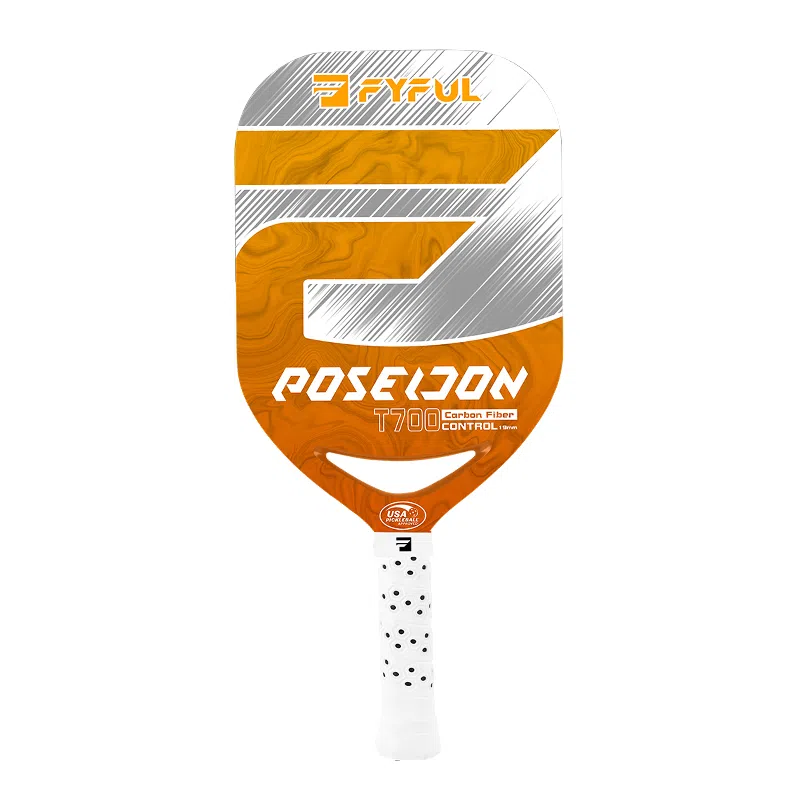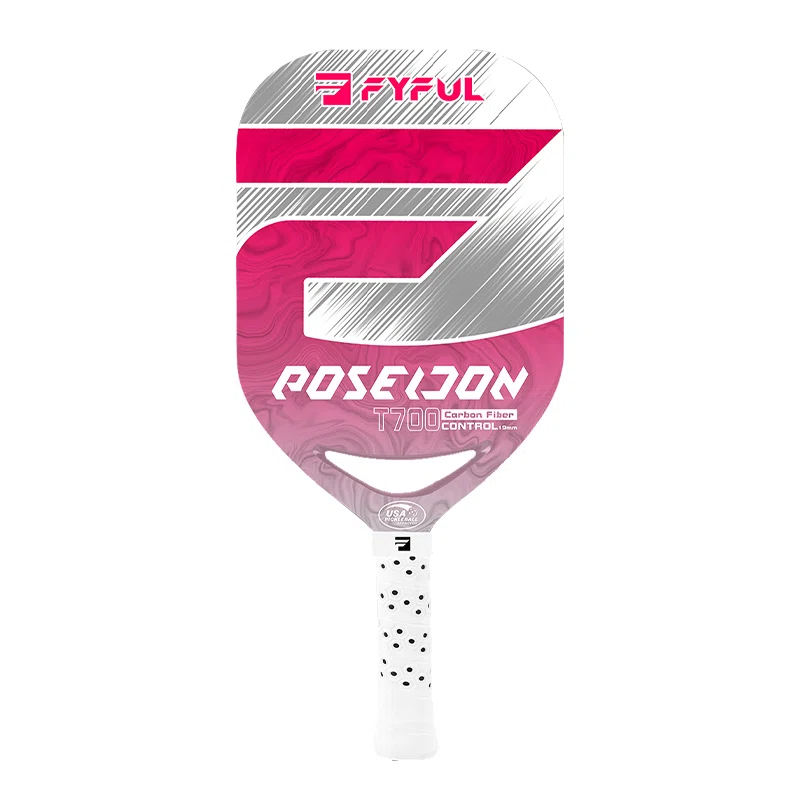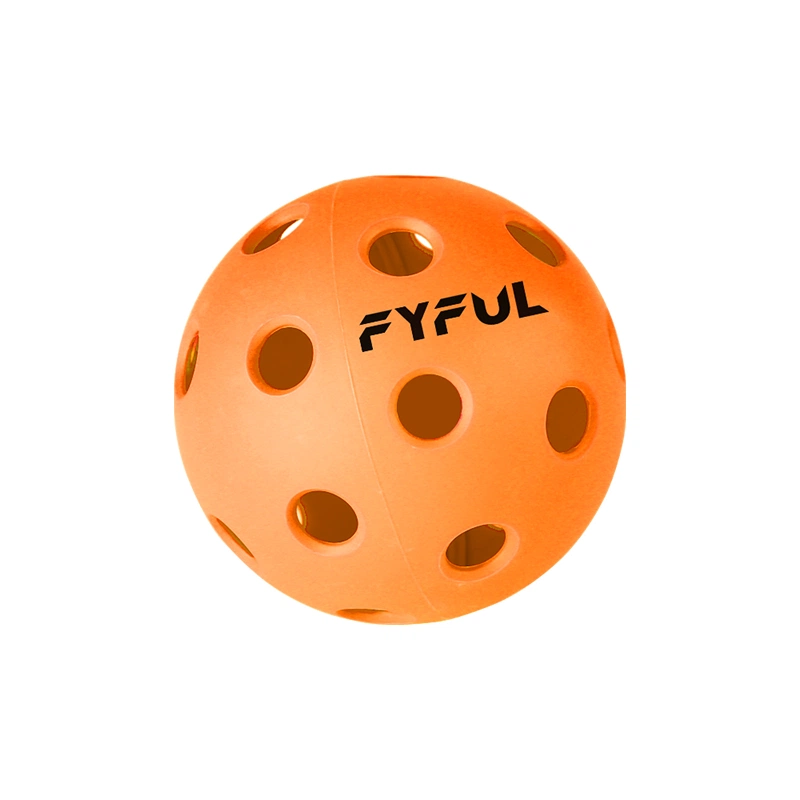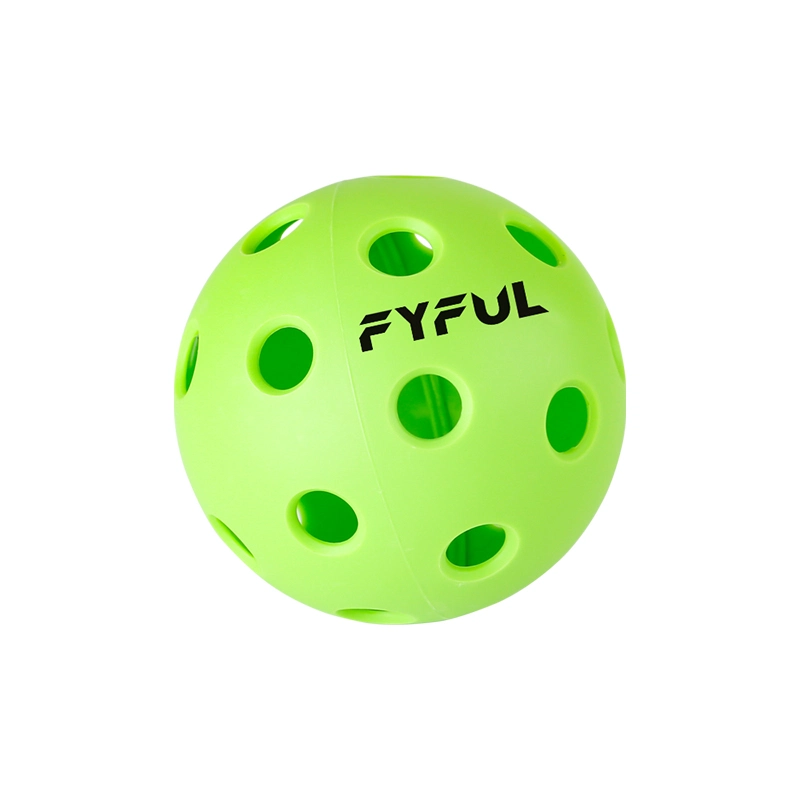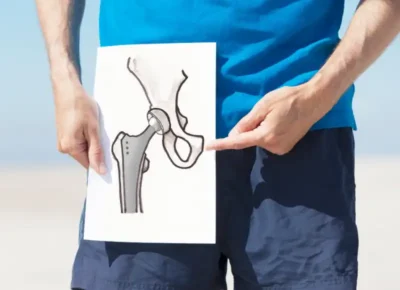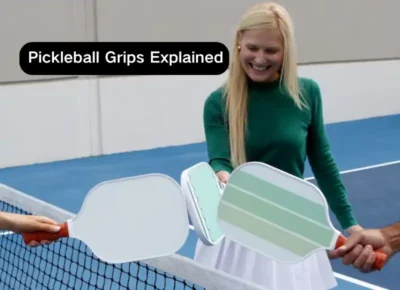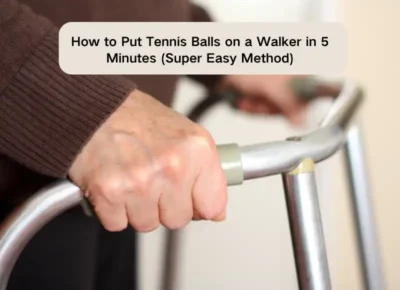Imagine this: a quiet pickleball court where no one shouts “Out!” or “Switch!”—but the game flows with perfect rhythm. Players raise their hands, tap paddles, flash signs. The energy is there, the communication is seamless—just silent.
Welcome to the world of deaf pickleball, where inclusion meets innovation.
What Is Deaf Pickleball—And Why Does It Matter?
Deaf pickleball isn’t just about players who are hard of hearing. It’s a growing community of athletes, coaches, organizers, and allies who believe that the sport should be equally accessible to everyone—without relying on spoken language.
In this space, visual communication takes center stage: hand signals replace verbal calls, body language substitutes shouting, and reflexes sharpen as players learn to “read” the game differently.
And the truth? These adaptations don’t only benefit deaf players—they make the game clearer, fairer, and more focused for all participants.

Pickleball Life
1. Serve / Replay – Let’s Start With Clarity
Before every serve, players confirm readiness using a simple palm-up gesture. In deaf pickleball, servers also make eye contact and pause—no one’s rushed. If there’s a fault, the replay signal (rotating your index finger in the air) ensures both teams reset with mutual agreement.
Why it matters: Deaf players can’t hear a line judge’s call—but clear hand signals like these ensure every point starts on equal footing.
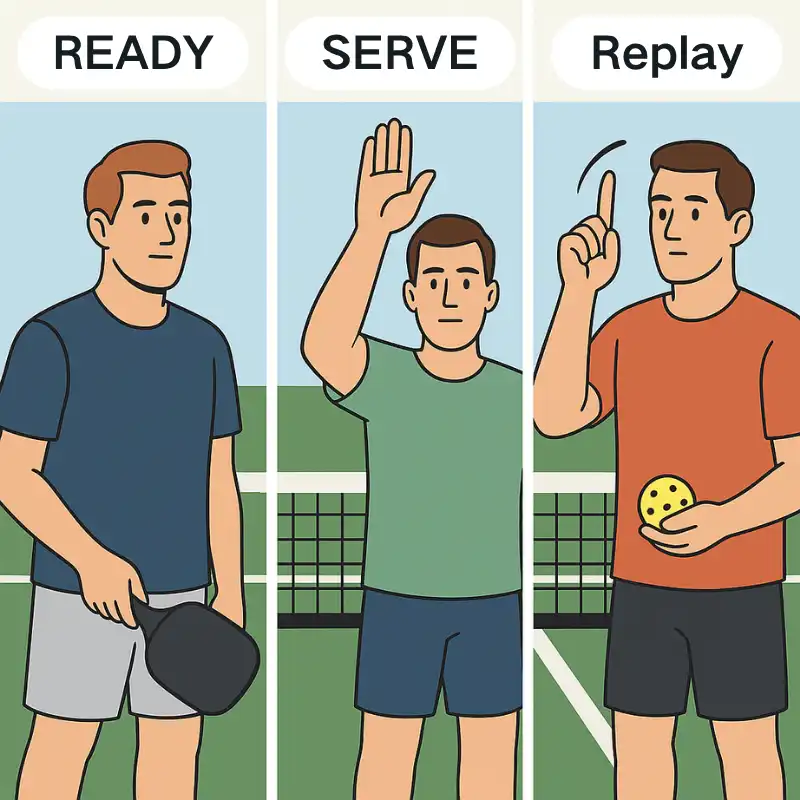
Serve / Replay Sign Language
2. Out / In – The Most Misunderstood Call
In fast rallies, shouting “Out!” isn’t helpful if no one can hear it. So, deaf pickleball relies on a pointed finger toward the sideline for out-of-bounds, or a palm-down swipe for “in.” These moves leave no confusion.
Even in pro-level matches, visual confirmation reduces disputes.
Why it matters: Disagreements over line calls are the top cause of tension. Visual cues keep the peace.
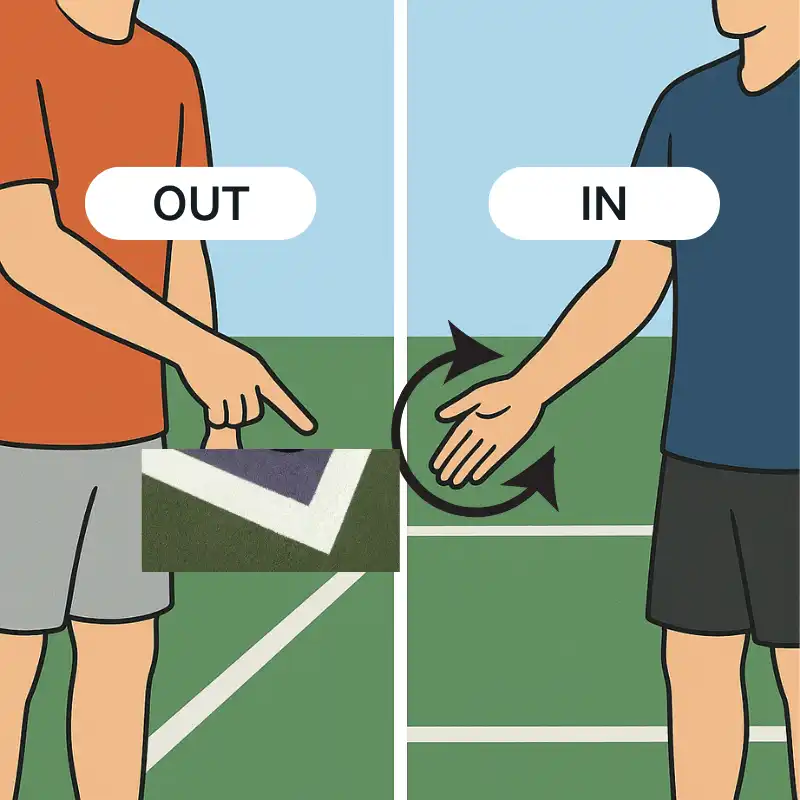
Out / In Sign Language
3. Switch / Stay – Silent Team Strategy
Doubles play relies on timing—and that’s tough without cues. A crossed-arm gesture signals a side switch after a serve or rally. A flat hand pressed toward the court means “stay.”
Why it matters: Without this, deaf players risk constant miscommunication. With it, they develop deeper team coordination—some say even better than hearing teams.
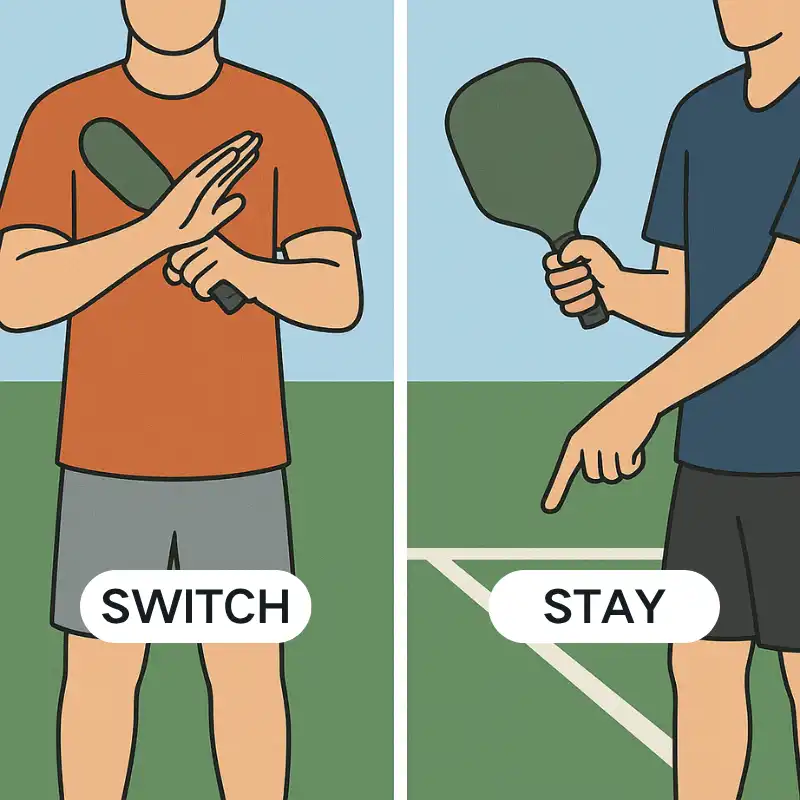
Switch / Stay Sign Language
4. Timeout / Medical / Substitution
One palm in a T-shape over the other = Timeout. Touching the shoulder can mean “Medical” or “I need help.” These signals help players, coaches, and referees maintain safety and pacing without needing loud explanations.
Why it matters: In deaf pickleball tournaments, player safety is preserved through clear, universal cues.

Timeout / Medical Sign Language
5. Number Signs (1–18) – Score Without Speaking
In deaf pickleball, scorekeeping often happens through ASL number signs. Whether you’re calling out the score, confirming a position, or checking how many timeouts remain—numbers matter.
That’s why players, coaches, and even referees often learn ASL signs for 1 to 18, which cover almost all in-game needs.
Most signs for numbers 1–10 are one-handed and are shown with the palm facing forward, at or near shoulder level. Numbers 11–18 involve subtle finger flicks or combined gestures, but are just as fast once practiced.
Why it matters: From announcing “11–6” to showing timeout counts or game points, ASL number signs make non-verbal scoring smooth, standardized, and inclusive.
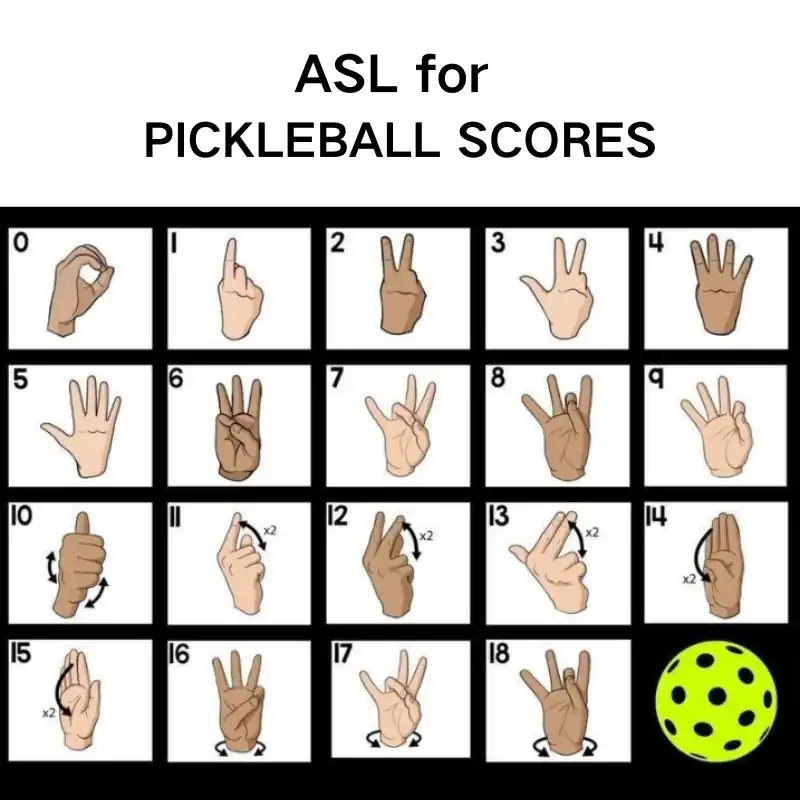
Number Signs (1–18) Sign Language
Let’s Rally — Inclusion Strengthens the Game
Deaf pickleball isn’t about overcoming a limitation—it’s about expanding how we connect, compete, and communicate. From parks to national tournaments, more venues are embracing clear visuals, gesture-based play cues, and adaptive communication methods. This shift isn’t charity—it’s innovation that benefits all players.
At FYFUL, we believe inclusion starts with accessibility. That’s why we manufacture:
- Paddles with bold-contrast graphics to help players better read spin and movement
- Portable net systems and modular gear designed for fast setup across all environments
- Custom paddle kits and court accessories that make it easier for new communities to join in
The more barriers we lower, the more doors we open—for everyone. Feel free to contact us!
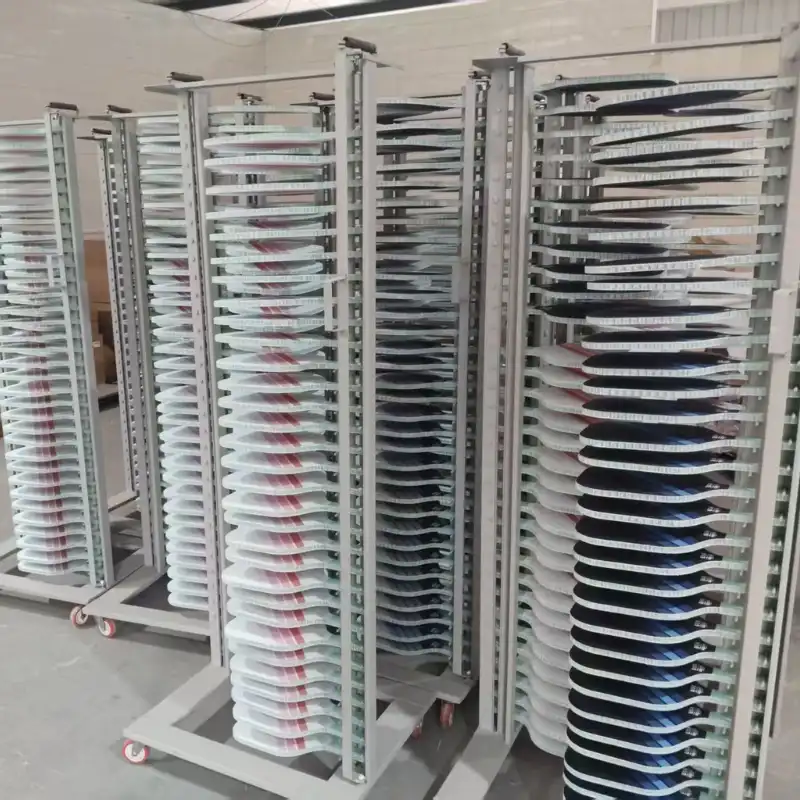
Custom Pickleball Paddle
✅ Summary: Deaf Pickleball Is Changing the Game—for Everyone
Whether you’re hearing or deaf, a player or organizer, coach or manufacturer, understanding how deaf pickleball works makes the sport better for all. Visual signals reduce tension, clarify play, and improve doubles teamwork.
As this movement grows, FYFUL will continue supporting it through inclusive gear, accessible guides, and community-centered innovation—because pickleball truly belongs to everyone.


